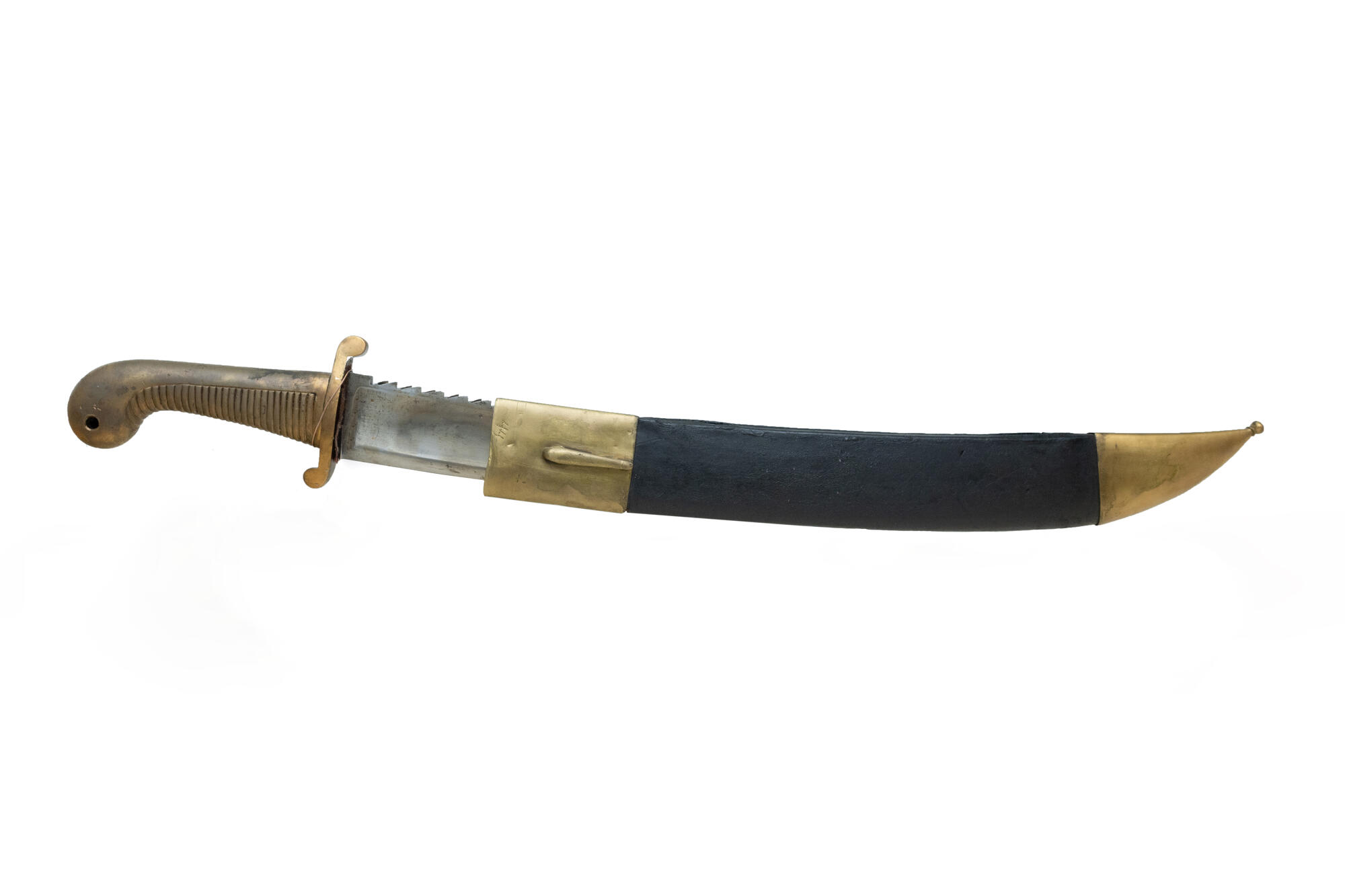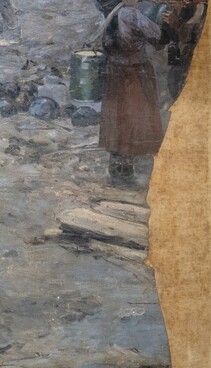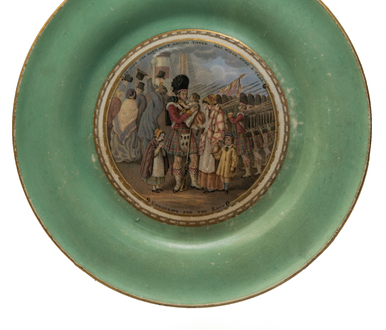The first analogues of cutlasses were known near the 15th century. They were shorter than sabers or swords and were easier to handle in small or narrow spaces, which is why pirates used similar weapon during battles in the ship’s hold. For hunters, it became indispensable: with its help it was possible to skin a killed animal and cut branches for a campfire.
In Europe the armament of foot troops with cutlasses began in the second half of the 17th century. Miners, sappers, engineers and artillerymen used them not only as a weapon, but also as a tool: they chopped brushwood, sawed rods and stakes for fascines —twig bundles. From such material, defensive structures and field fortifications were built, wooden road mattings were made on the swamps — flooring to pass through the swamp. With the help of a cutlass, it was possible to make very basic stretchers, therefore, in some armies, paramedics were also equipped with them.
In the Russian army, cutlasses appeared in the middle of the 18th century. Such weapon with a slightly curved sword-blade was given to the lower ranks of the observational corps — a military formation led by the Count Pyotr Shuvalov. The corps got its name at the beginning of the Seven Years' War of 1756-1763.
The cutlass had a cross-shaped hilt (handle) and the blade was shorter than that of a saber. In 1759 it began to be used in the artillery of the Imperial Army instead of a skewer, and in 1797 it entered service with the lower ranks of the sapper troops.
Until the second half of the 19th century, there were three types of cutlasses: infantry, navy and sapper. The collection of the museum contains a sapper cutlass, model of 1827. It was made in the middle of the 19th century, presumably at the Zlatoust arms manufactory.
The sword-blade of the weapon is made of steel, the cross-shaped hilt is brass-cast. The scabbard of the cutlass is made of wood and covered with patent leather, with copper tips on the edges. In 1955, the weapon entered the collection of the panorama from the State Historical Museum in Moscow.
The cutlasses 1827 model were in service with sapper battalions and military labor companies until 1834. As early as in 1832, the soldiers were given a heavy and short version with a straight sword-blade, a cast handle and saw-like teeth. The scabbard had bayonet sockets. But defending with such a weapon was really hard, and it weighed a lot. Therefore, from the end of the 19th century, the updated cutlasses were left only for drummers, musicians and soldiers of the guard to go out in peacetime — for example, to parades.
In Europe the armament of foot troops with cutlasses began in the second half of the 17th century. Miners, sappers, engineers and artillerymen used them not only as a weapon, but also as a tool: they chopped brushwood, sawed rods and stakes for fascines —twig bundles. From such material, defensive structures and field fortifications were built, wooden road mattings were made on the swamps — flooring to pass through the swamp. With the help of a cutlass, it was possible to make very basic stretchers, therefore, in some armies, paramedics were also equipped with them.
In the Russian army, cutlasses appeared in the middle of the 18th century. Such weapon with a slightly curved sword-blade was given to the lower ranks of the observational corps — a military formation led by the Count Pyotr Shuvalov. The corps got its name at the beginning of the Seven Years' War of 1756-1763.
The cutlass had a cross-shaped hilt (handle) and the blade was shorter than that of a saber. In 1759 it began to be used in the artillery of the Imperial Army instead of a skewer, and in 1797 it entered service with the lower ranks of the sapper troops.
Until the second half of the 19th century, there were three types of cutlasses: infantry, navy and sapper. The collection of the museum contains a sapper cutlass, model of 1827. It was made in the middle of the 19th century, presumably at the Zlatoust arms manufactory.
The sword-blade of the weapon is made of steel, the cross-shaped hilt is brass-cast. The scabbard of the cutlass is made of wood and covered with patent leather, with copper tips on the edges. In 1955, the weapon entered the collection of the panorama from the State Historical Museum in Moscow.
The cutlasses 1827 model were in service with sapper battalions and military labor companies until 1834. As early as in 1832, the soldiers were given a heavy and short version with a straight sword-blade, a cast handle and saw-like teeth. The scabbard had bayonet sockets. But defending with such a weapon was really hard, and it weighed a lot. Therefore, from the end of the 19th century, the updated cutlasses were left only for drummers, musicians and soldiers of the guard to go out in peacetime — for example, to parades.



